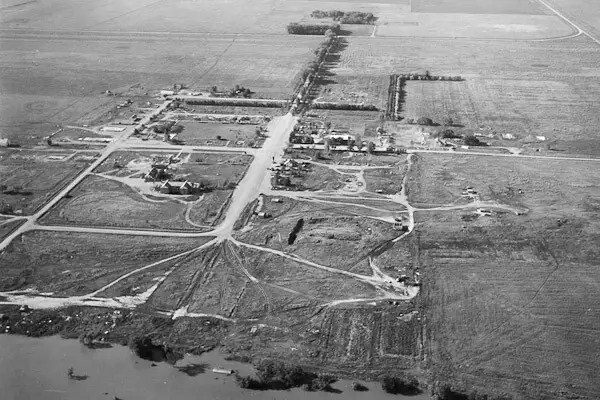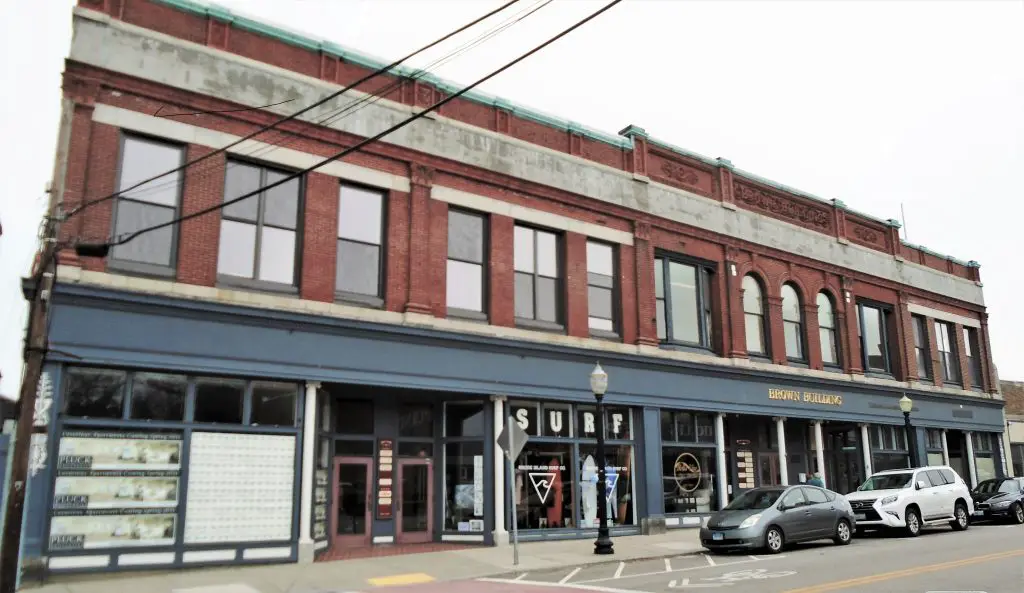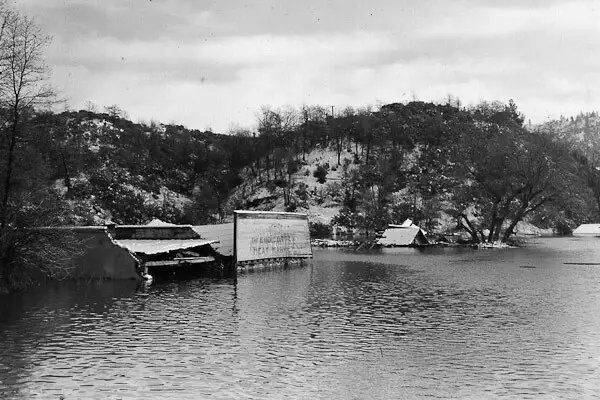Prescott, known as “Everybody’s Hometown,” is a haven of historical architecture. Every brick and wooden beam in downtown Prescott has a story to tell, reflecting centuries of heritage and cultural transformation.

The preservation efforts for historic buildings in downtown Prescott are not just about retaining the city’s picturesque charm but also about conserving a rich legacy for future generations to explore and appreciate.
The Historical Background of Downtown Prescott
Understanding Prescott’s unique architectural landscape begins with a journey into the past. The city, founded in 1864, served as the capital of the Arizona Territory. Its growth and evolution mirrored the American expansion into the West.
The architectural design of the city became a physical embodiment of its rich history, with buildings serving as silent witnesses to the changing times. Prescott’s Historical Society provides a wealth of information on this subject.
Downtown Prescott became a commercial and social hub, with saloons, stores, and public offices lining the bustling streets.
The buildings, many of which stand today, symbolize various architectural styles from different periods, such as Victorian, American Craftsman, and Pueblo Revival. These buildings hold historic and cultural significance that has stood the test of time.
The Challenges of Historic Building Preservation
Preserving historic buildings comes with its own set of unique challenges. The pressure from modern development is arguably one of the most significant hurdles.
The promise of new infrastructure and the lure of economic benefits often overshadow the need to preserve architectural heritage. Such development pressures could potentially threaten the existence of these historic buildings.
Environmental factors are another threat to the integrity of these historical structures. Weathering, erosion, and natural disasters can cause significant damage over time, requiring intensive restoration efforts.
Moreover, there is a constant battle between maintaining the buildings’ original integrity and ensuring they meet modern safety standards, as detailed in this study.

Regulatory and legislative obstacles can also impede preservation efforts. Sometimes, laws may not provide adequate protection for historical sites, or there may be bureaucratic red tape that hinders preservation activities. Despite these challenges, however, the commitment to preserving Prescott’s historical downtown has never wavered.
Key Historic Buildings and Their Importance
Downtown Prescott is home to numerous significant structures. A stand-out is Whiskey Row, an iconic block that once hosted as many as 40 saloons during the mining boom. Today, it is a thriving hub of boutiques, galleries, and, yes, a few saloons, making it a living testament to Prescott’s past. Prescott.com offers a closer look at the historical significance of Whiskey Row.
Another notable landmark is the Hassayampa Inn. This elegant, Spanish Colonial Revival-style building has been welcoming guests since 1927. Its timeless charm has been carefully preserved, offering a portal to the grandeur of the past.
Just around the corner, you’ll find the Elks Theatre, a masterwork of Victorian architecture. Operating since 1905, it continues to host a variety of cultural events. Its preservation helps maintain Prescott’s reputation as Arizona’s Christmas City.
Preserving such buildings ensures that the character and stories of downtown Prescott endure, allowing generations to appreciate the architectural beauty and learn about the city’s history.
Community Involvement in Preservation Efforts
Community engagement is the cornerstone of successful preservation efforts in Prescott. Citizens contribute significantly to these initiatives, offering support through volunteering, advocacy, and other forms of active participation. The commitment and passion of the local community breathe life into these preservation projects, ensuring their success.
One notable example of community involvement is the Save the Elks campaign. This grassroots movement played a pivotal role in preventing the demolition of the historic Elks Theatre. Such initiatives showcase the power of collective action in preserving Prescott’s historic landmarks.
The Economic and Social Impact of Preservation
Historic preservation contributes significantly to Prescott’s local economy. By fostering tourism and stimulating local businesses, preservation efforts create jobs and generate revenue for the city. The preservation of historic properties also boosts real estate values, contributing to economic growth.
The Role of Preservation in Community Identity and Social Cohesion
Preservation efforts play a crucial role in fostering a sense of community identity and social cohesion. Historic buildings serve as communal landmarks that inspire pride and foster a sense of belonging among residents.
These landmarks become focal points for community gatherings and cultural events, enhancing the city’s social fabric.
Future Plans for Historic Building Preservation
Preservation efforts in downtown Prescott continue to evolve, with several exciting projects in the pipeline. These initiatives include the restoration of several iconic buildings and the continued engagement of the public in preservation activities.
Long-term Strategic Goals for Preservation in Prescott
Looking to the future, strategic goals for preservation in Prescott include leveraging new technologies to aid in preservation work, strengthening collaboration between government and non-government entities, and promoting greater community involvement in preservation efforts.
These goals aim to ensure the enduring protection of Prescott’s historic landmarks for generations to come.
The Role of Local Government and Preservation Policies
Preservation of historic buildings is a shared responsibility between various stakeholders, with local government playing a pivotal role. The City of Prescott has long understood the importance of preserving its architectural heritage, implementing various policies to protect these treasured sites.

The city’s Historic Preservation Program, established in 1997, sets guidelines for the preservation, rehabilitation, and restoration of historic properties. The program not only ensures compliance with local, state, and federal laws, but also promotes the use of historic buildings for commercial, cultural, and residential purposes.
In addition to the program, the city has established a Historic Preservation Commission. This committee reviews proposals for changes to historic properties and advises the city council on preservation-related matters. They also help in the recognition and registration of historic properties. Such initiatives underline the city’s commitment to safeguarding its historical sites.
Key Historic Buildings and Their Importance
Whiskey Row, once the heart of Prescott’s social scene during the mining boom, is an enduring symbol of the city’s vibrant past.
The row, which once boasted about 40 saloons, is a testament to the hardy spirit of the miners, cowboys, and pioneers who shaped Prescott’s early years. Today, the Row still stands as a bustling hub of activity, echoing with the whispers of its rich history.
Hassayampa Inn
The Hassayampa Inn, with its timeless Spanish Colonial Revival architecture, is an elegant nod to the grandeur of the past. Since opening its doors in 1927, the inn has been a haven for travelers seeking to experience the charm of Prescott’s bygone era.
Every detail of the building, from the hand-painted ceiling beams to the etched glass panels, evokes a sense of nostalgia that continues to captivate visitors.
The Elks Theatre
The Elks Theatre, operating since 1905, is an architectural gem that adds to the richness of Prescott’s historic landscape. It has witnessed countless performances and cultural events throughout the years, making it an enduring cultural centerpiece in downtown Prescott. The preservation of this Victorian-era theatre ensures the continuity of Prescott’s artistic heritage.
Prescott’s history comes alive within the walls of the Sharlot Hall Museum, which is a preserved 1864 log cabin that was once the governor’s mansion. Today, it is a repository of local history, art, and culture. The museum, through its carefully preserved artifacts and exhibits, offers a tangible link to Prescott’s past.
Non-Governmental Preservation Initiatives
While government efforts are vital, non-governmental entities also play a crucial role in preservation. Various preservation societies, heritage groups, and local citizens are often at the forefront of the battle to safeguard historic properties.
The Prescott Historic Preservation Society, for instance, has been pivotal in the city’s preservation initiatives. This non-profit organization, comprised of local citizens passionate about preserving their town’s architectural heritage, works tirelessly to protect and restore historic buildings.
These societies often partner with local government, businesses, and property owners, becoming key drivers of the preservation movement. They represent the community’s voice, ensuring the local populace remains an active participant in the preservation process.
Community Involvement in Preservation Efforts
Community involvement is crucial to the success of any preservation project. In Prescott, citizens’ engagement and support have helped fuel preservation initiatives, from volunteering in clean-ups to advocating for policies.
One noteworthy example is the Save the Elks campaign. When the historic Elks Theatre faced potential demolition, the community rallied behind the cause, fundraising and advocating for its preservation. This collaborative effort was instrumental in saving the cherished landmark and reviving it as a vibrant center for arts and culture. This news article gives a detailed account of the campaign.
Such instances underscore the power of collective action. They remind us that every individual has a role to play in preserving the city’s rich architectural heritage.
The Economic and Social Impact of Preservation
Preservation efforts are not just about protecting the past; they also have tangible benefits in the present and future. These include:
- Economic Impact: Historic preservation can drive economic growth by fostering tourism, creating jobs, and stimulating local businesses. For instance, tourists flock to Prescott’s historic sites, bringing significant revenue to local businesses.
- Social Impact: Historic buildings often serve as community focal points, hosting cultural events and fostering a sense of communal identity and cohesion. They are part of the city’s narrative and its residents’ collective memory.
Current and Future Preservation Efforts
Preservation efforts in downtown Prescott are ongoing. Initiatives include the ongoing restoration of iconic buildings, educating the public about their historical significance, and involving the community in preservation efforts.
Looking ahead, the future of historic preservation in Prescott is promising. New technology, including digital tools like 3D scanning and mapping, is increasingly being incorporated into preservation work. These technologies help in creating precise records of existing conditions, planning restoration work, and even in creating virtual tours of historic sites.

The continuation of grassroots community campaigns and the sustained commitment of local government and preservation societies are vital for the success of these preservation efforts. It is an ongoing process, a constant effort that requires the investment and involvement of all stakeholders.
Frequently Asked Questions: Preservation Efforts For Historic Buildings In Downtown Prescott
What are some of the key historic buildings in downtown Prescott?
Whiskey Row, Hassayampa Inn, and the Elks Theatre are among the most iconic historic buildings in downtown Prescott. Each building holds a unique story of Prescott’s past.
Who is responsible for the preservation of these buildings?
Preservation efforts are a combined responsibility of the local government, preservation societies, property owners, and the local community.
What challenges face historic building preservation in Prescott?
Challenges include modern development pressures, environmental factors, and sometimes regulatory and legislative obstacles.
Why is preserving these historic buildings important?
Preservation of these buildings helps to maintain the city’s unique character and architectural beauty. It also serves educational purposes, allowing future generations to learn about the city’s history. Moreover, it has economic and social benefits, including boosting tourism and fostering community identity.
Conclusion
Preservation efforts for historic buildings in downtown Prescott are more than just keeping the past alive; they’re about embracing a collective identity, celebrating a shared history, and appreciating the architectural grandeur that the city offers.
Despite challenges, the passion and commitment of the local government, preservation societies, and community members ensure that these historical treasures are safeguarded. It’s a testament to Prescott’s resilience and love for its heritage, making the city not just a historical site but a living, breathing chronicle of the past, present, and future.
The continued efforts to preserve the city’s history enrich the community’s cultural experience and stimulate economic growth, proving that in downtown Prescott, history is not just to be remembered – it’s to be lived.
The future of preservation efforts in Prescott looks promising, and as long as the commitment to safeguarding the city’s heritage remains, so too will the stories etched in the bricks and beams of its historic buildings.
In a world constantly chasing ‘the new’, downtown Prescott serves as a gentle reminder that sometimes, ‘the old’ can be just as captivating, enlightening, and indeed, as new as anything else.



Leave a Comment
You must be logged in to post a comment.